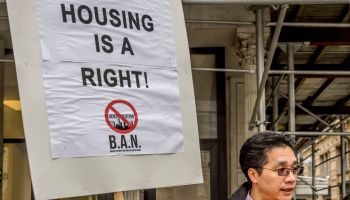Just who is Joseph Kony, anyway? If you learned his name from the viral video that rocketed the notorious leader of the Lord’s Resistance Army (LRA) to fame this week, the film producers’ campaign to make Kony a household name appears to have succeeded — but not without a massive backlash.
The half-hour video in question underscores the LRA’s grisly atrocities, which include the murder, rape, and abduction of tens of thousands of peopleover the past two decades. According to Invisible Children, a San Diego-based NGO that launched the campaign, the purpose of the video was to make Joseph Kony famous.
Celebrities were quick to chime in and voice their support using the hashtag ‘STOPKONY,’ but the tide soon changed.
Posing with guns.
A photo showing three members of Invisible Children holding guns and posing with members of the Sudan People’s Liberation Army certainly didn’t help with PR. The filmmakers have since explained that “the three workers in the photo thought it would be a good “joke” photo for family and friends.” The picture, however, certainly lends to criticisms of…
Neo-colonialism
Musa Okwongo, a commentator for The Independent, take issue with the film’s overly simplistic approach and failure to hold Uganda’s President Yoweri Museveni accountable. He writes:
“Invisible Children asked viewers to seek the engagement of American policymakers and celebrities, but – and this is a major red flag – it didn’t introduce them to the many Northern Ugandans already doing fantastic work both in their local communities and in the diaspora. It didn’t ask its viewers to seek diplomatic pressure on President Museveni’s administration.”
As the firestorm swept the Internet, Invisible Children posted a response on its website, addressing a few of the concerns raised above, saying that it has spent about 80 percent of its funds on programs that further its mission, about 16 percent on administration and management, and about 3 percent on fundraising. The group said its accountability and transparency score is currently low because it has four independent voting members on its board of directors and not five, but that it is seeking to add a fifth.















